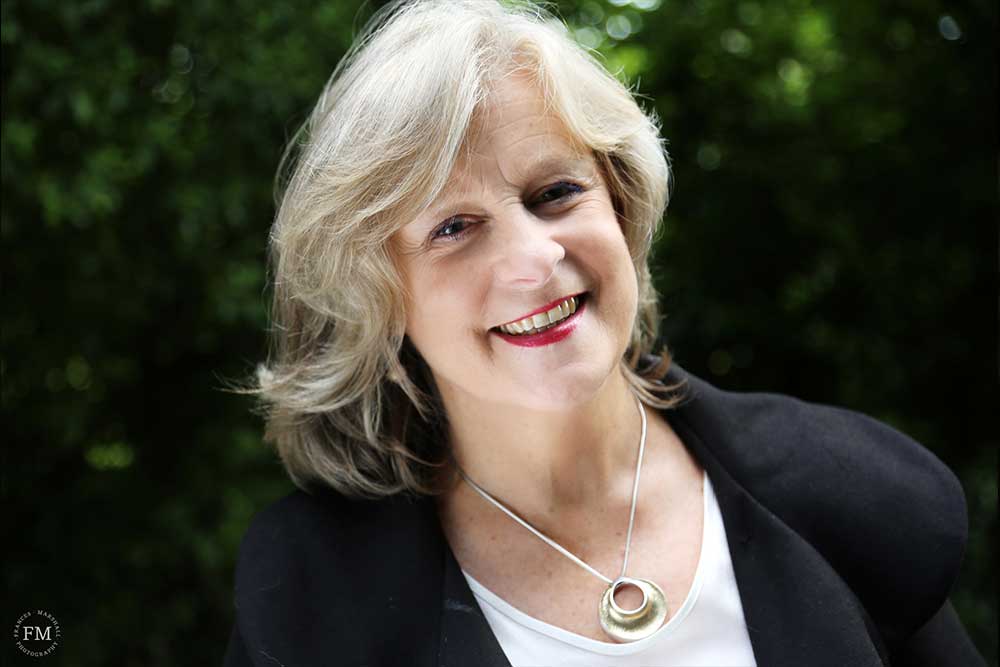The Psychology of Teaching Music: Virginia Kerr

July 2015
Words by
Emer Nestor
Photos by
Frances Marshall
Final Note recently attended the second RIAM Teaching Network Conference at the Royal Irish Academy of Music.
Dedicated to ‘Future Directions for the Music Teaching Profession’, visiting teachers enjoyed a diverse array of lectures on such topics as: music and technology; the role of Music Generation within Irish music education; tips on teaching the senior RIAM piano grades; the value of incorporating the voice and group singing within instrumental lessons; and the role of music in promoting health and well-being. Attendees were introduced to the ideas surrounding the new DipRIAM, which will be launched in September 2015, and featured in our October edition.
Internationally acclaimed Irish soprano, vocal coach, and psychotherapist Virginia Kerr delivered an insightful lecture on the psychology of teaching music, which she has kindly agreed to share with Final Note.
Enlighten us on the value of using psychology in teaching.
Education opens the door to the future, and as teachers we open this door for our students. A teacher needs to know how to communicate, motivate and work effectively with students who will, no doubt, all have very diverse backgrounds and varying degrees of musical talent and drive. A knowledge of the psychology of teaching, however basic, helps the teacher to recognise the needs, abilities, hopes and possibilities of each student, and to adopt the necessary techniques of teaching for the most effective communication, development and learning.
As a distinguished pedagogue, how would you define your psychology of teaching, and how has this evolved over the course of your career?
My psychology of teaching is to establish a good relationship — where mutual respect and trust play an enormous role. I aim to enable my students to be the best they can possibly be, to develop their love of music and singing, and to enjoy the journey! I recognise that each student brings something unique into the room, and is entitled to unconditional positive regard. I try to always ensure that my criticism is fair and constructive, and the negative must always be balanced by the positive. Keeping in touch with a student’s feelings is crucial, and can sometimes be very challenging.
As my self-awareness has developed over the course of my career, so too has my ability to recognise issues and difficulties that my students might be experiencing. I have learned to separate “my stuff” from “their stuff”, and to put myself in their shoes and view situations from their perspectives. Meeting your students where they are at is very positive for the teaching environment.
Tell us about ‘self-caring’ in music lessons — how can teachers encourage students to ‘self-soothe’?
Our job as teachers is to strengthen our students ‘Self Carer’. It is our role to help the student to become musically independent, to self-soothe when negativity and self-blame take over, to manage the inner critic that we all have (to a greater or lesser extent), to create a safe space for themselves, and to tap into their own resources. Within the environment of the lesson, positive emotional experiences help develop the Self Carer. Students then begin to feel and internalise acceptance, appreciation and achievement. The student who receives care, approval and encouragement receives positive messages about him or herself. This includes messages such as: “you matter”; and “you can do it”. The opposite also applies! It is very important to give ongoing praise and to validate any previous musical experiences. Knowing when to criticise is key.
What is the significance of developing a student’s ‘inner critic’?
We all have our ‘inner critic’ — the voice that you hear in your head telling you that you are not good enough, that you performed badly, or that you will never get things right. This inner critic sits on our shoulder and shouts in our ear. On the other shoulder the positive voice is battling to be heard, but most of the time, for many people, this little voice goes unheard and unnoticed. The stronger a student’s ‘self carer’, the stronger the inner resource supporting the student will be. If students are able to resource themselves in a positive way, then they will be able to manage the ‘inner critic’, and have a realistic and balanced view of themselves. Our negative voices can be very strong and have to be controlled, otherwise our thinking leans towards negative self-criticism.
‘Mindfulness’ has become an important part of the psychology of teaching in recent years — how can teachers put this into practice in their own classes?
‘Mindfulness’ is a technique for living in the present moment. It brings our attention to our thoughts, feelings and actions and develops our ability to focus. It increases self-awareness and awareness of others, and brings a feeling of calm to the teaching environment. With this self-awareness comes the ability to ‘respond’, rather than ‘react’, in stressful situations. Breathing exercises are an excellent way of bringing the student into the moment; keeping the focus on the breath and bringing the thoughts back to the breath each time. There are so many good exercises and short mindfulness courses available today, and I would urge teachers to consider checking these out with a view to using these strategies in the workplace, as the benefits are always positive in my opinion.




To what degree can teachers avoid the inherent confusion between ‘my stuff’ and ‘their stuff’ within the lesson environment, and encourage a relationship based on reality rather than transference?
As teachers, we need to be very aware of our own internal processes. We can’t help our students manage theirs if we can’t manage our own! What buttons are being pressed throughout a day of teaching? We need to reflect on our feelings and thoughts as we teach. Do they change from one pupil to another? What is going on inside our heads while we are teaching? We need to be very self-aware, as these thoughts can be an indicator of our own pressures and how we are feeling about ourselves. The relationship between the teacher and the student needs to be based on reality — i.e. the student needs to check in with what he or she thinks, and not what he or she thinks that the teacher thinks or feels. This goes back to the development of the ‘self carer’, which strengthens the student’s inner resources so that he or she can trust and rely on his or her own judgement.
Is it important to teach students how to manage failure, and what can teachers do to improve on this element?
It is very important that students learn how to manage failure, and to learn and move on from it. So many great musicians have been paralysed by thoughts of failure, and have found it so difficult to get past these feelings and to turn the failure into a learning experience. Once again, it is down to the inner resources of the student, the teacher and the teaching environment on which the student depends, to make him/her feel safe and secure. It is only when a student feels internally secure can he/she be free to learn, to try, and to risk failure. If the teacher is successful in developing these inner resources, then the student stays fully present and engaged, despite failures and challenges.
Explain the value of ‘active listening’ within the lesson.
How often have you talked to someone and felt that you were not heard at all?
How often have you done that to someone else?
‘Active listening’ means fully concentrating on what the person is saying to you, rather than just passively hearing the message. Active listening improves mutual understanding and focuses the attention on the speaker. In today’s world so many people feel “unheard”. It is challenging to sit with someone when there are so many distractions and stresses in our own lives. Everyone wants and needs to be heard, and the same applies to students. We, as teachers, need to really listen in an active way, as it can be very beneficial to the teacher/ student relationship. It can avoid misunderstandings as it enables clarification, and it tends to encourage students to open up.
Many teachers fall into the unconscious trap of focusing on negative criticism, how can balance be maintained, and what is ‘positive’ teaching?
Some teachers think that it is not necessary to highlight the “good stuff” to their students. It’s almost taken for granted that the students will recognise what they have done well, and therefore don’t need to be told. This is a very counterproductive way of working. The teacher should always aim for balance and measure the positive with the not so positive (negative). How can you empower your student to do better if you keep pointing out the negative things, and none of the positive? The student is more than likely going to lose heart and give up, or at least not enjoy learning and performing in the future. The negative criticism can be internalised, and students can end up feeling very bad about themselves and their abilities. If balance is maintained and the teacher has a positive attitude towards the student (despite the negative issues and/or results), then the outcome is going to be far more productive in the long term.
How would you advise teachers to deal with students who don’t/won’t/can’t practice?
First of all I would find out which of the three conditions (don’t/won’t/can’t) applies! A lot will depend on the relationship between the student and the teacher. Questions I would ask, or try to find the answers to, would be things like: Are they not practising because of fear of failing, that it will never be good enough so they won’t even try?; 1) Is it a pattern in their lives that they are not consistent?; 2) That they start something but give up and don’t bother as time goes on?; 3) How can you help break that pattern? Do they want to be having music lessons at all?; 4) Who wants them to take these lessons?; 5) Is the non-practising an act of rebellion?; and 6) Is their home environment not conducive to practising?
There are lots of questions to be answered, and lots of different scenarios to be taken into account. If you have a student who simply will not practise, and you can’t ascertain any good reason for such behaviour, then you have to take the decision as to whether you continue if the student wants to attend lessons, or you call it a day. However, in some cases this might simply confirm the student’s inner belief that he/she is no good or that nobody cares.
Knowing when to push or when to pull back is crucial within a teaching environment — are there stress signposts that teachers should be aware of?
After many years of teaching, I find that I can usually read the energy levels of students when they walk into the room. Often the tears won’t be too far away, and it is a judgement call as to whether or not one continues on with the lesson. Sometimes it passes. Often a simple question as to how they are will elicit a response, which will determine whether they need to talk or just need to get on with things. At the end of the day it is up to the student how they handle this situation, but it is crucial that the teacher is seen to be supportive and sympathetic. However, that is not to say that the teacher should constantly have to deal with tears and tantrums. Everything comes back to the relationship between the teacher and the student, and the safety and confidentiality of the space.
On a ‘final note’!…we need to maintain an open, flexible and positive attitude to ourselves and to our students, and trust in ourselves, our students and the teaching process!
Final Note readers are warmly invited to contact Virginia with your specific performance and teaching issues at: Virginia.Kerr@finalnotemagazine.com. All contributors will be treated anonymously, and Virginia will endeavour to answer all queries in her monthly feature.
All images displayed in this article are subject to copyright.
Share this article





